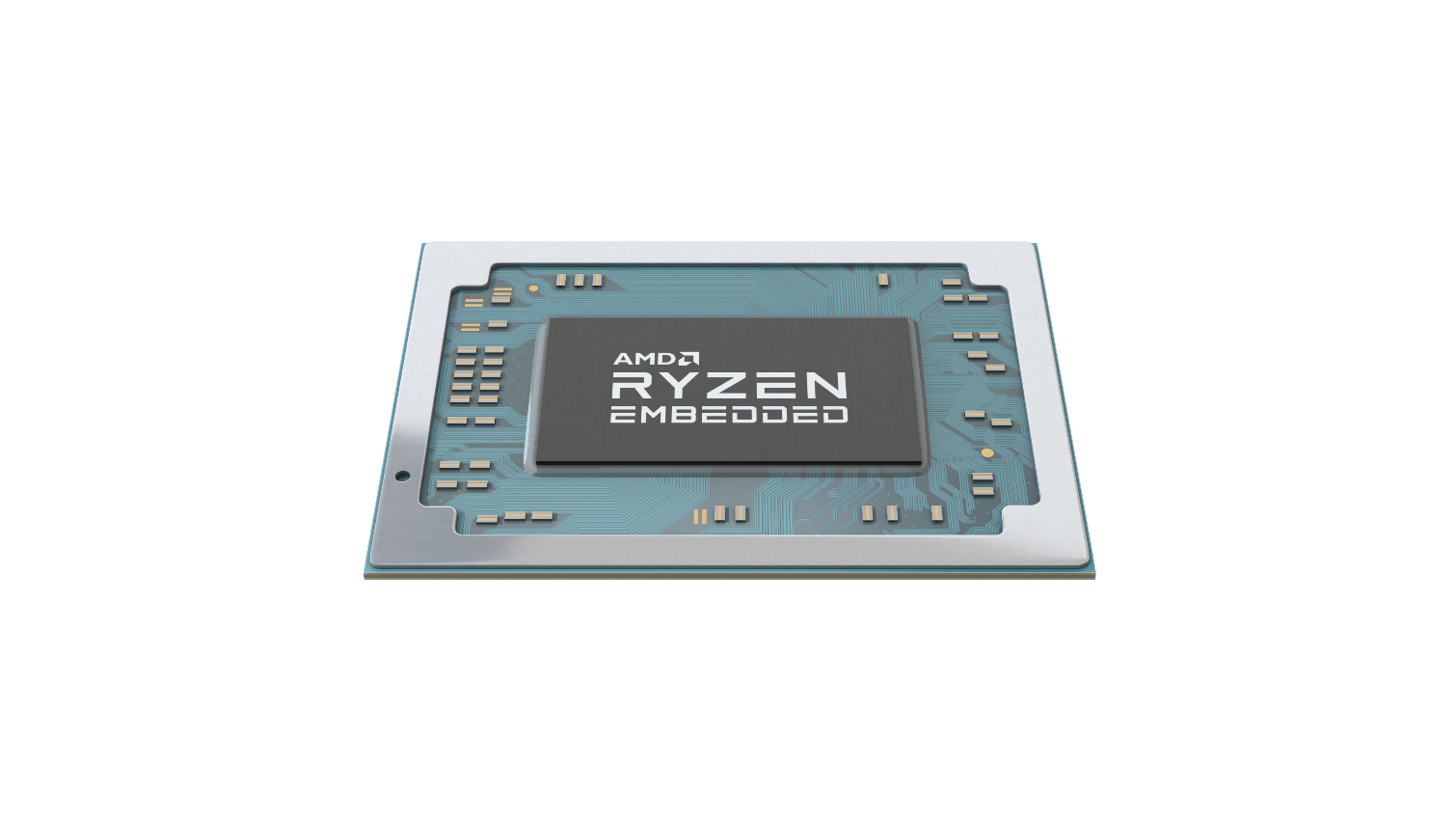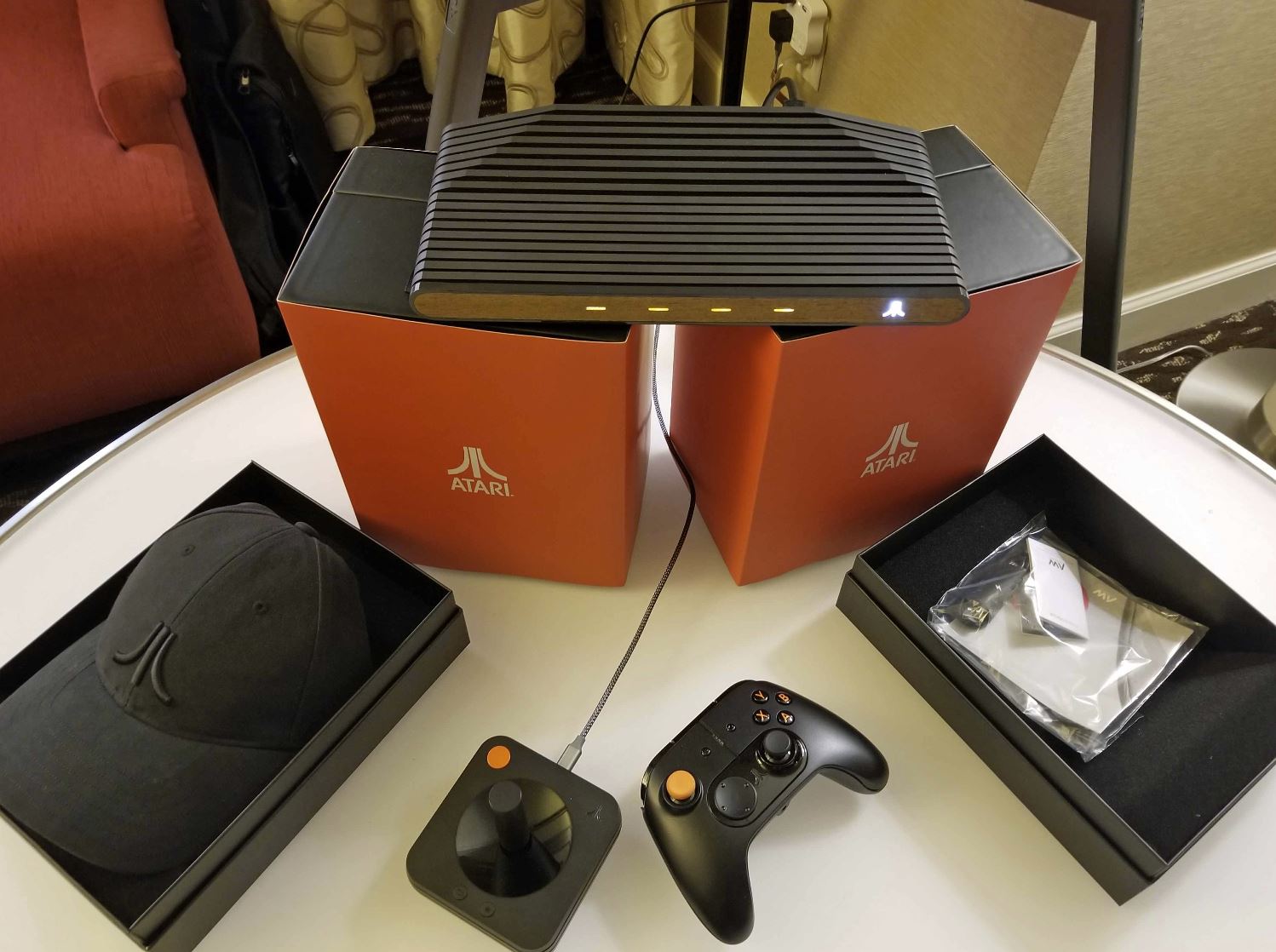AMD Announces New Ryzen R1000 Embedded Processors, Atari VCS Design Win
AMD announced its new Ryzen Embedded R100 SoCs to tackle the growing number of applications for embedded processors, which includes low-power game consoles and handheld gaming devices. For instance, Atari recently announced that it had revamped its Atari VCS with a new processor, but didn't divulge what type of new AMD processor was lurking inside. As part of today's release, AMD announced the Atari VCS uses the new AMD R1000 embedded processors.
AMD's R1000 series come as BGA-mounted SoCs, meaning they won't install in a normal desktop PC motherboard, and feature Zen+ CPU cores paired with the Vega 3 graphics engine. This class of chips drops into any number of devices, like the handheld Smach Z gaming PC, the aforementioned Atari VCS, robots, digital signage, industrial, thin client, and networking equipment.
| Ryzen R1000 - Banded Kestrel | TDP | Cores / Threads | Base / Boost Freq. (GHz) | GPU Compute Units (CU) | GPU Freq. (GHz) | L2 Cache | L3 Cache | Memory Support | Dual Ethernet Ports |
| R1606G | 12W - 25W | 2 / 4 | 3.5 / 2.6 | 3 | 1.2 | 1MB | 4MB | Dual-Channel DDR4-2400 | 10Gb |
| R1505G | 12W - 25W | 2 / 4 | 3.3 / 2.4 | 3 | 1.0 | 1MB | 4MB | Dual-Channel DDR4-2400 | 10Gb |
The key to winning all of these segments is to deliver solid performance within a low power envelope. As such, the dual-core quad-thread R1606G and R1505G operate at a default 15W TDP, though customers can tune the configurable TDP (cTDP) from 12W to 25W to tune for the application. The low 12W bar allows these chips to operate in fanless systems, meaning they don't require a fan on the heatsink, which is a critical requirement for many thin clients.
The R1606G comes with a 3.5 GHz base and 2.6 GHz boost clock, while the R1505G takes a minor step back to a 3.3 GHz boost and 2.4 GHz base. Both chips support dual-channel DDR4-2400 memory, which is a necessity to minimize power consumption.
These R1000-Series processors slot in under AMD's quad-core eight-thread V1000 models. To maximize compatibility, both the R1000 and V1000 chips can be attached to FP5 BGA motherboards. For those on the hunt for the ultimate in embedded performance, AMD also offers the EPYC embedded 3000 series, which are variants of its data center chips that feature up to 16 cores and 32 threads.
The R1000 processors support up to three 4K displays running at 60 frames per second (FPS) with three independent DisplayPort 1.4 connections, along with H.265 encode/decode and VP9 decode. They also support HDMI 2.0b. The processors support the same full suite of security features as the EPYC data center processors, which includes a secure root of trust and transparent memory encryption in the memory controllers. In contrast to Intel's competing models, AMD offers these features on both models.
The R-series processors also come equipped with two integrated 10GbE connections, which is particularly attractive for networking applications. As with all of its embedded processors, AMD also offers ten years of availability to cater to the unique needs of this market niche.
Get Tom's Hardware's best news and in-depth reviews, straight to your inbox.
AMD is aiming for the best performance-per-watt ratio, claiming a 3X performance per-watt-improvement over its prior-gen models, and up to 4X the performance-per-dollar. The company provided the benchmark results above comparing to competing Intel models, but as with all vendor-provided benchmarks, take these with a grain of salt.


AMD supports a wide variety of operating systems, some of which you don't hear about often. However, Yocto and MEL Flex OS are common operating systems in the embedded space. AMD also supports the usual suspects, like Windows 10 and Ubuntu.
AMD already has a broad assortment of customers and partners. The chips will be available this quarter to OEMs and ODMs.
Image Credits: AMD, Tom's Hardware

Paul Alcorn is the Editor-in-Chief for Tom's Hardware US. He also writes news and reviews on CPUs, storage, and enterprise hardware.




